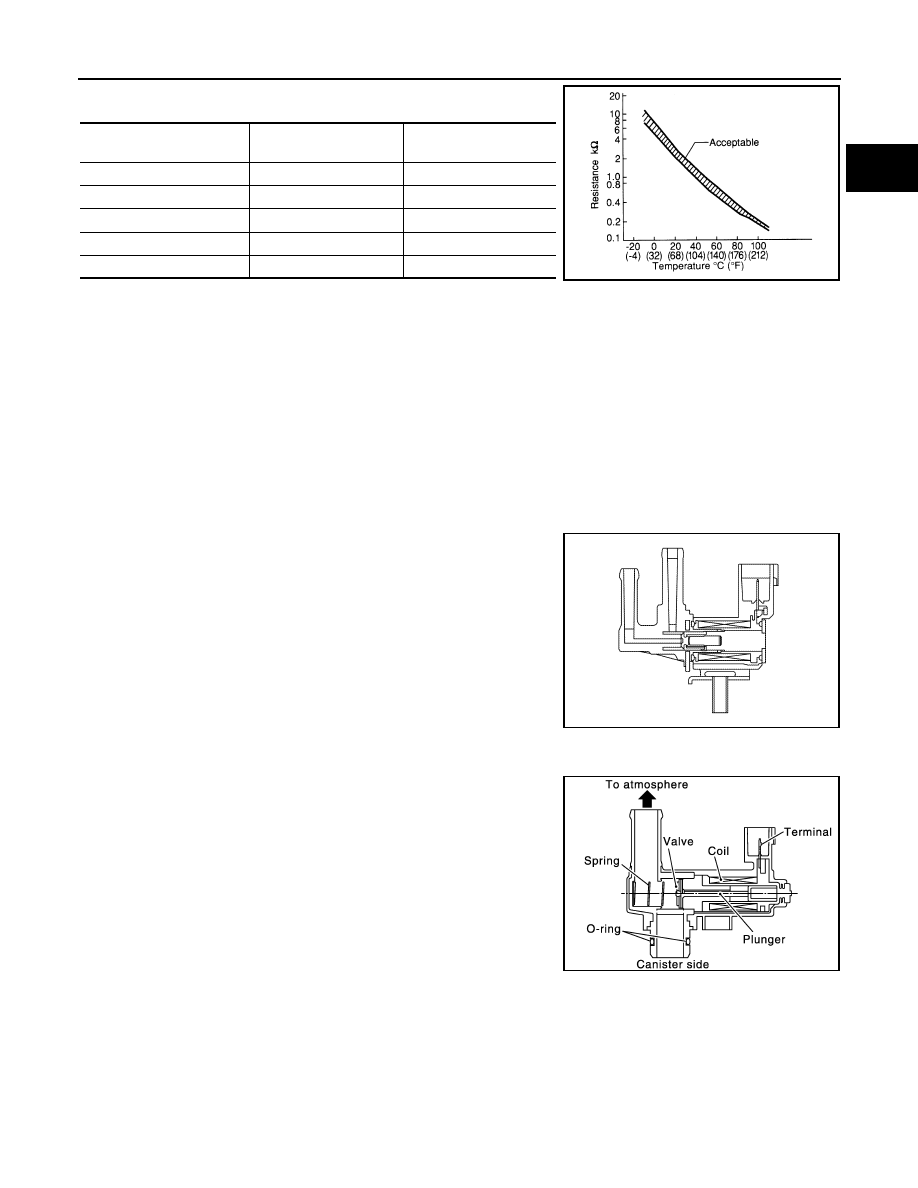Nissan Juke F15. Manual - part 451

COMPONENT PARTS
EC-617
< SYSTEM DESCRIPTION >
[MR EXCEPT FOR NISMO RS MODELS]
C
D
E
F
G
H
I
J
K
L
M
A
EC
N
P
O
<Reference data>
*: These data are reference values and are measured between ECM terminals.
Cooling Fan
INFOID:0000000012198181
COOLING FAN CONTROL MODULE
Cooling fan control module receives ON/OFF pulse duty signal from IPDM E/R. Corresponding to this ON/OFF
pulse duty signal, cooling fan control module sends cooling fan motor operating voltage to cooling fan motor.
The revolution speed of cooling fan motor is controlled by duty cycle of the voltage.
COOLING FAN MOTOR
Cooling fan motor receives cooling fan motor operating voltage from cooling fan control module. The revolu-
tion speed of cooling fan motor is controlled by duty cycle of the voltage.
EVAP Canister Purge Volume Control Solenoid Valve
INFOID:0000000012198182
The EVAP canister purge volume control solenoid valve uses a ON/
OFF duty to control the flow rate of fuel vapor from the EVAP canis-
ter. The EVAP canister purge volume control solenoid valve is
moved by ON/OFF pulses from the ECM. The longer the ON pulse,
the greater the amount of fuel vapor that will flow through the valve.
EVAP Canister Vent Control Valve
INFOID:0000000012198183
The EVAP canister vent control valve is located on the EVAP canis-
ter and is used to seal the canister vent.
This solenoid valve responds to signals from the ECM. When the
ECM sends an ON signal, the coil in the solenoid valve is energized.
A plunger will then move to seal the canister vent. The ability to seal
the vent is necessary for the on board diagnosis of other evaporative
emission control system components.
This solenoid valve is used only for diagnosis, and usually remains
opened.
When the vent is closed, under normal purge conditions, the evapo-
rative emission control system is depressurized and allows “EVAP
Control System” diagnosis.
Engine oil temperature
[
°C (°F)]
Voltage
*
(V)
Resistance (k
Ω)
–10 (14)
4.29-4.50
7.0 - 11.4
20 (68)
3.48-3.58
2.37 - 2.63
50 (122)
2.03-2.49
0.68 - 1.00
90 (194)
0.97-1.04
0.236 - 0.260
110 (230)
0.63-0.67
0.143 - 0.153
SEF012P
JSBIA0651ZZ
PBIB1263E